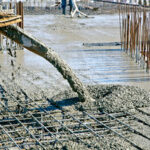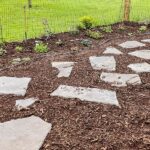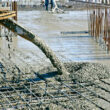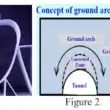Being a contractor helping homeowners getting pavers around the patios or driveways; a lot of homeowners asks “can you put pavers on mulch?” That’s because a lot of people believes that mulch might not help get a solid foundation for pavers. But in reality, mulch do help in getting a solid foundation for pavers.
So,
Yes! You can put pavers on mulch to prevent them from becoming un-leveled or being sunk. Mulch also help prevent weeds from growing in between the pavers and act to suppress weed growth.
Also Read: Importance of Vegetation Management Reports in Civil Engineering Environmental Assessments
But that’s not all. In order to get most out of mulch you must follow the right procedure and right step of steps to achieve a flawless surface. So, I’d like you to read the entire article as I’ve tried to cover all the relevant questions and aspects of laying pavers on mulch.

Mulch – but why?
It is a layer of material which is applied to the soil surface and used for enhancing the aesthetically beauty of the area under consideration, improving the fertility of soil, to conserve the soil moisture and to reduce the growth of weeds. Mulch can be organic or inorganic, permanent or temporary, applied over bare soil or around existing weeds
Is it Good Idea to put Pavers on Mulch
There are numerous environmental advantages of putting pavers on mulch. It is excellent thing because it can retard the growth of weeds and plants. In order to lay pavers on level ground surface, mulch is a good idea to do so because mulch prevents from being unlevelled and being sunk. The purpose of lying mulch is to suppress the growth of weeds and plants and nothing to do with the strength of pavers.

Procedure of Putting Pavers on Mulch
Easy, peasey! Putting pavers on mulch doesn’t need the services of some professional landscaping companies. Thanks to the easy process, it’s a perfect weekend DIY venture.
Here’re some of the tools that you need while putting pavers on mulch:
Like Us on Facebook!
- Landscape Fabric
- Stakes
- Mulch
- Sod Staples
Now, that you’ve got the idea of the tools you need; let’s move onto doing things practically.
Subscribe Us on YouTube!
- First we’ll try to measure the area correctly that you want to cover with pavers. If the area is large, you can divide it in several chunks and combine the area at the end.
- We’ll consider the thickness of 2 to 3 inches of thickness as it is ideal to cover the exposed soil.
- Now for the landscape fabric, we’ll cut it as per measurement and place in order by suing sod staples.
- At this stage, make sure you follow a pattern that not just blends well with the surroundings but can also look appealing. You can mark the pattern stakes.
- After marking the area to be measured, we’ll lay the paving stones.
- Finally, spread the mulch around the paving stones and make sure the path is evenly filled.
Pro tip: You can get different size and types of paving stones from the market. So, it’s best that you first decide the pattern and the type of look you want. That’s because your choice of mulch type or the type of pavers depend a lot on the pattern or the look you seek.
Also Read: 8 Ideal Mulch Types for a Luscious Landscape

Types of Mulch
Organic Mulch
Mulch that originates from the living material is most commonly formed used now a day. Upon decomposition, organic mulch will enhance the soil fertility and ultimately the quality of soil gets improved. It comprises of;
Composts
In order to improve the chemical, physical and biological properties of the soil, the mixture of ingredients used as a fertilizer for plants is called Compost. The kitchen waste is a great source of organic nutrients and can be great factor in improving the soil fertility.
Also Read: How To Clean Concrete with TSP – Trisodium Phosphate?
Grass Clipping
It is formed as a result of shearing of grass. It is very much beneficial so it is advisable not to throw it outside as a waste material. Grass Clipping can be used as manure. It will increase the fertility of the soil by applying it to vegetable or flower beds and allowing it to decompose on its own.
Wood Chips
The fallen leaves of trees and barks when shredded results in the formation of wood chips. It can also be purchased from any local garden store.
Saw Dust
It is formed as a waste material from the wood of carpenter’s work and mostly obtained from the construction of building.
Hay or Straw
It is a waste product of wheat grains that can be used again for increasing the fertility.
Newspaper or Chopped Leaves
The shredding of unused newspaper results in the formation of mulches that are white and black color and are becoming more and more popular in these days. The newspaper or chopped leaves will ultimately enhance the beauty of landscape.
Also Read: Can you paint concrete pavers? (Including Staining)
Inorganic Mulch
The displacement of organic mulch is expensive as compared to inorganic. Although it does not decompose, yet it helps to enhance the beauty of pathways with paving stones. Nevertheless, it does not enhance the soil quality but helps in preventing the growth of weeds. This mulch also not contributes towards the growth of plants. It mostly comprised of synthetic materials, like;
- Plastics
- Rocks
- Geotextiles
- Stones
Both organic and inorganic mulch can be an excellent combination with paving stones.
Also Read: Types of Tractor Rakes – The 4 Types of Quality Rakes
Advantages Of Using Mulch With Your Pavers
- It controls weed: No one ever like weeds growing among pavers, right? So, the best thing you can do is to use mulch. In fact, I’ll recommend you use mulch because the weeds can otherwise deteriorate the appearance of landscape. So, the best thing about mulch is that it acts as weed suppressor.
- It keeps your garden clean & attractive: Are you looking to achieve beauty, dimension, and depth in your next landscaping project? Try to use mulch with your pavers. That’s the best thing you can do. It helps to achieve a healthy and attractive touch. In addition to stopping weed growth between the paving stones, the mulch also keeps the paving stones clean when it rains.
- It helps prevent pavers from sinking: Mulch can leave paving stones balanced or flush with the ground. The mulch does its best to prevent the cobblestone from sinking, but with proper processing. Proper processing helps mulch to prevent the paving stones from sinking.
- It also aids to solidify paving stones.
How to Prevent The Pavers From Sinking
Firstly choose a specific level and ensure that bottom of all the paving stones are flat and then landscape the area by indicting this level.
Secondly, after completion of landscaping of the area, use coarse sand for leveling it. To assist the coarser sand and give better result in compaction, it is advisable to mix it with water. It is worth noting not to overdo it. These simple steps will keep your paving stones from sinking into the ground.
Further Read: Can We Put Swimming Pool Above Ground On Pavers?
Conclusion
The growth of useless grass can be prevented by the use of mulch. It assists in making pavers to hold firm on the ground and solidifies it. The application of mulch is a good idea to ensure that pavers are clean and prevent the pavers from sinking.























